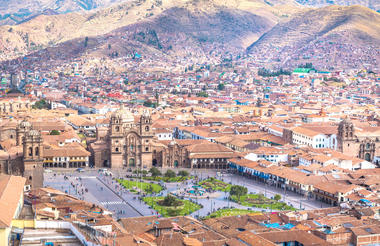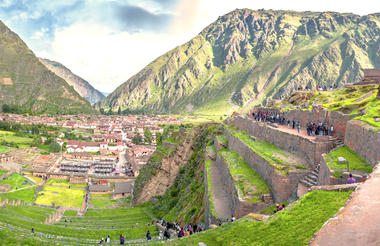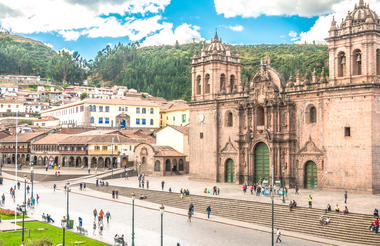Quito, the capital of Ecuador, lies on the slopes of the Andes’ mighty Pichincha volcano in the Guayllabamba river basin. The city’s Old Town is its main attraction - one of the most well preserved in Latin America and the first-ever UNESCO heritage site. Wander among ancient, colourful streets; pop into glorious historic churches; or spend an afternoon browsing the vibrant Mercado (markets) and learning about the unique, traditional Ecuadorian Sierra culture. Other bucket list items in Quito include a visit to the impressive Casa Museo Guayasamín; the Museo de la Presidencia which provides insight into Ecuador’s history; and a climb up the iconic towers of the Basilica. Numerous gorgeous public parks and a thriving and exciting culinary scene complete the package.
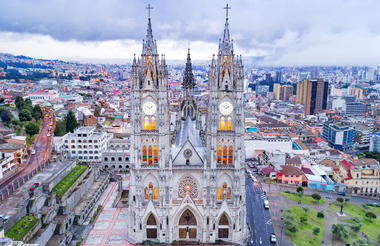
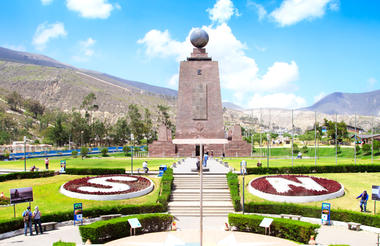
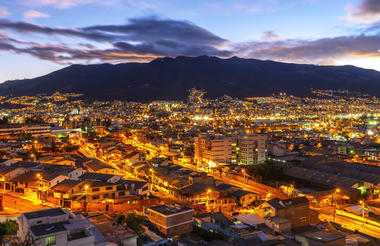
Located in the central part of the Galápagos archipelago, the small, flat island of Baltra (also known as South Seymour Island) is the only island not included within the Galápagos National Park, as it serves primarily as the site of the archipelago’s main airport and a small Ecuadorian military base. With its starkly arid landscape and sparse vegetation of prickly pear cacti, salt bushes and palo santo trees, arriving here can feel like landing on another planet. As Baltra is a designated non-visitor site, travellers are swiftly transferred by bus to one of two docks, where they board either a cruise ship or a ferry bound for nearby Santa Cruz Island.



San Cristóbal is the easternmost island in the Galapagos archipelago as well as the most populated. Famous for its natural attractions, the island also boasts some wonderful shopping and dining opportunities as well as a local airport. Take a break from snorkeling and hiking to enjoy the best Ecuadorian cuisine, or admire some of the exquisite artwork and designs at local galleries and markets. Must-see attractions include the Galapaguera Tortoise Reserve; the Interpretation Center (which provides important background information on the Galapagos); and Puerto Grande, a protected cove on the north-western side of the island boasting a magnificent white sandy beach - ideal for a peaceful walk, swim or photography sesssion.



Perched at the southern edge of the Galápagos archipelago, Española Island, Ecuador, exudes a raw, untamed beauty. Its windswept cliffs, golden beaches, and rugged lava formations create a dramatic backdrop where wildlife reigns supreme. Visitors are captivated by the island’s most famous residents: seasonally, thousands of waved albatrosses perform intricate courtship dances, playful sea lions basking on sun-warmed rocks, and vibrant marine iguanas dotting the shores. Snorkelling in crystalline waters reveals a kaleidoscope of tropical fish, while the rhythmic crash of waves against cliffs underscores the island’s isolation. Accessible only via guided tours, Española offers a tranquil yet exhilarating encounter with nature, rewarding travellers with rare glimpses of one of the world’s most pristine and extraordinary ecosystems.



Floreana Island is located in the far southern portion of the Galapagos archipelago. As the first of the islands to support permanent human habitation, Floreana boasts a rich heritage complete with tales of buccaneers, pirates, whalers, convicts, and colonists. Visitors are invited to follow in the footsteps of whalers in the 1700s and drop a postcard into the famous "post office" barrel. At the island's northern tip is Punta Cormorant, with its two beaches, one of which forms a nesting site for Galapagos green turtles and is aptly named "Flour Beach" for its soft, powder-white sand. Between these two beaches lies a salt lagoon frequented by long-legged greater flamingoes and other shorebirds. Floreana's unique human history, fascinating geology, remarkable wildlife, and the little village of Puerto Velasco Ibarra, offering excellent lodging and food, make an ideal base for visitors looking to explore these unforgettable islands.



The island of Santa Cruz is home to Puerto Ayora, the largest and most developed town in the Galapagos. Although many travellers use it as a springboard to explore the more remote surrounding islands, those who venture deeper will find that Santa Cruz has much to offer in its own right. With numerous visitor sites, easily accessible beaches, and remote highlands at its heart, the island serves as an excellent base for adventure. Its most renowned attraction, the Charles Darwin Station, features an impressive turtle breeding programme and fascinating displays on the conservation of the Galapagos’ unique biosphere. Visitors can also swim or snorkel at the island’s magnificent beaches, where white sand and turquoise waters are alive with pelicans, blue-footed boobies, and marine iguanas.
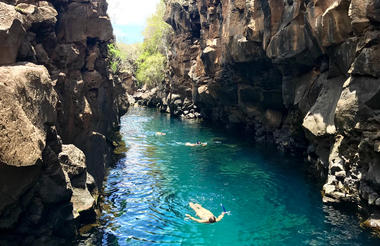
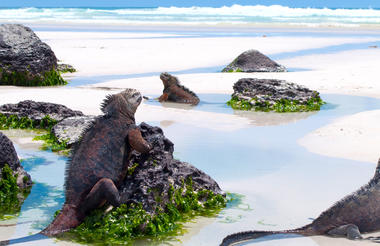
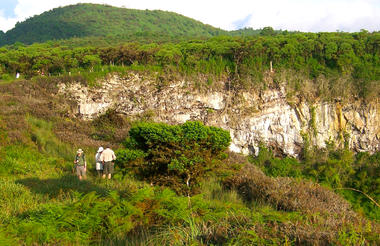
As one of the world’s foremost destinations for wildlife-viewing, this volcanic islet in the Galápagos Islands group makes an ideal stomping ground for avid nature enthusiasts. Charles Darwin was famously inspired to write his seminal work, ‘The Origin of Species’, after witnessing the veritable treasure trove of natural wonders exhibited on this extraordinary archipelago. Darwin was so intrigued by the unique landscapes, colourful rock formations and exotic wildlife of these islands that he named one of its most unusual islets after his close friend and fellow naturist, Sir Bartholomew James Sulivan. Today, Bartholomew Island is no less fascinating that is was in 1835 when Darwin first arrived. Visitors typically swim and snorkel around the iconic Pinnacle Rock where they are treated to an impressive natural world of penguins, marine turtles, white-tipped reef sharks, and other marine creatures, many of which are found nowhere else on earth.



Rising dramatically from the crystalline waters of the Galápagos, Genovesa Island exudes a wild, otherworldly energy. Known as the “Bird Island,” it is a sanctuary for immense colonies of seabirds, including red-footed boobies, frigatebirds, and Nazca and swallow-tailed gulls, whose cries echo across its rugged cliffs. Visitors can explore the island’s volcanic caldera on foot along winding trails that reveal dramatic cliffside vistas, or snorkel in sheltered coves teeming with tropical fish, rays, and curious sea lions. The scent of salty sea air mingles with the vibrant colours of nesting birds, creating an immersive sensory experience. Genovesa is an intimate encounter with raw, untamed nature, where every step and splash feels like discovery.



Peru’s capital is a fantastic city to tour, dotted with a multitude of cultural sites and beautifully preserved architecture. Founded by the conquistador Francisco Pizarro in 1535, Lima was first named ‘City of Kings’ – a biblical reference to the ‘Three Wise Men of the East’ – before its name was changed by the Spanish colonialists. The most significant historical buildings are located around the Plaza Mayor, the most notable being the Government Palace, where one can still observe the changing of the guard performed by the Húsares de Junín. The beautiful Cathedral and the various small palaces and colonial balconies also play also their part in the beauty of the city. Another highlight is the famed Larco Herrera Museum, documenting the millennial cultures that preceded the Inca civilization and containing a priceless collection of pre-Columbian artifacts, including some of South America's finest pre-Inca erotic pottery.
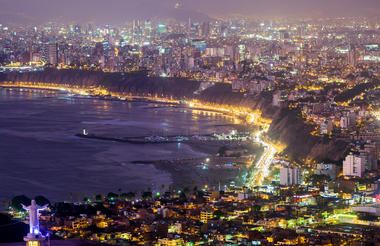
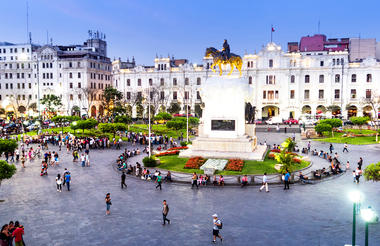
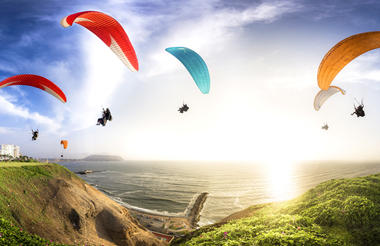
Also known as Urubamba Valley, the Sacred Valley of the Incas is located in the Peruvian Andes, beneath the world-famous site of Machu Picchu and not far from Cuzco, the unofficial Inca capital. This fertile valley is fed by a network of waterways and encompasses a wealth of archaeological sites, including Ollantaytambo, renowned for its extensive Inca ruins; Tipon, which features ancient agricultural terracing and a working irrigation system; and Pisac, with its ancient vestiges and colourful weekly market.
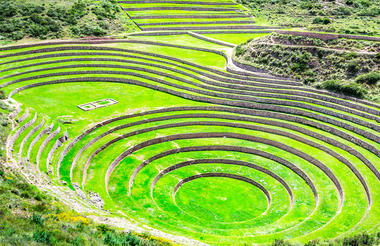
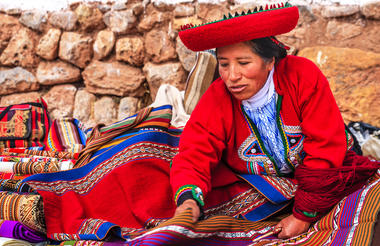
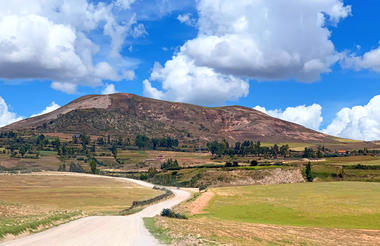
Perched high up in the Andes, Machu Picchu Pueblo is a riverside town known for its proximity to the famous Machu Picchu ruins. This cloud-forest town is encircled by towering forested cliffs and boasts an endless array of hotels, restaurants, markets and labyrinthine streets. Machu Picchu Pueblo, also known as Aguas Calientes, serves as an excellent base to explore the renowned ancient archaeological site of Machu Picchu. Visitors can enjoy a variety of other activities including: having a relaxing massage after a long day of exploring, taking a stroll through lush rainforest to the Mandor Waterfalls, embarking on an adventurous hike up the Putucusi Mountain or soaking in the relaxing thermal baths with the Andes as your backdrop. Don’t miss the Machu Picchu Museum and Botanical Gardens, displaying the area’s history and diversity of indigenous flora.

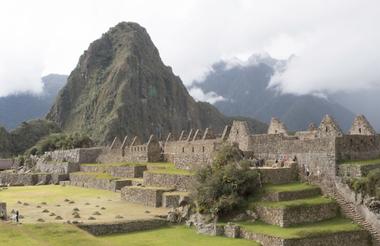
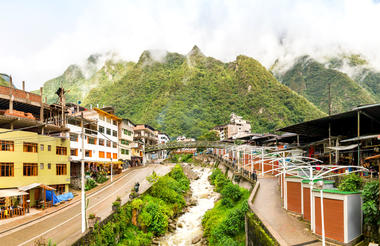
Once called the ‘Navel of the World’ by the Incas, Cusco rises in the southern Andes of Peru, where colonial grandeur meets the enduring stonework of the Inca Empire. A UNESCO World Heritage Site, it serves as the main gateway to Machu Picchu, the Sacred Valley, and surrounding ruins. At its centre, the Plaza de Armas—once Huacaypata—remains alive with cafés, arcades, and the 16th-century Cusco Cathedral, built from Sacsayhuamán’s stones. Nearby, the San Blas district unfolds with whitewashed adobe houses, blue balconies, and workshops where artisans craft metalwork, woodcarvings, and sacred art. Across the city, layers of history reveal themselves in landmarks such as the Korikancha, the Inca street of Hatun Rumiyoc with its twelve-angled stone, the Museum of Colonial Art, and the ancient shrines and water temples scattered through the surrounding hills.
